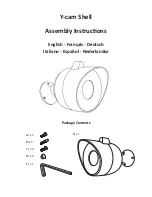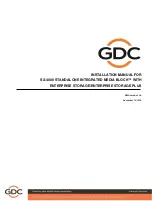
User's Guide HDSPe MADI
© RME
77
30.5 QS – Quad Speed
Due to the small number of available devices that use sample rates up to 192 kHz, but even
more due to a missing real world application (CD...), Quad Speed has had no broad success so
far. An implementation of the ADAT format as double S/MUX (S/MUX4) results in only two
channels per optical output. Devices using this method are few.
In earlier times the transmission of 192 kHz had not been possible via Single Wire, so once
again sample multiplexing was used: instead of two channels, one AES line transmits only one
half of a channel. A transmission of one channel requires two AES/EBU lines, stereo requires
even four. This transmission mode is being called
Quad Wire
in the professional studio world.
The AES3 specification does not mention Quad Wire.
With MADI, sample multiplexing is used as well to offer sample rates higher than 96 kHz. In
fact, technical reasons require to use this method beyond 96 kHz. A 192K or 384K Frame for-
mat would not be fully compatible to the MADI standard. Therefore 192 kHz is supported as
S/MUX4 only. So in 48K Frame Quad Speed mode, a MADI device distributes the data of one
channel to four consecutive MADI channels. This reduces the available channel count from 64
to 16.
As the transmission of quad rate signals with 48K Frame is done at standard sample rate (Sin-
gle Speed), the MADI ports still operate at 44.1 kHz or 48 kHz.
Summary of Contents for HDSPe MAD
Page 5: ...User s Guide HDSPe MADI RME 5 User s Guide HDSPe MADI General ...
Page 28: ...28 User s Guide HDSPe MADI RME ...
Page 38: ...38 User s Guide HDSPe MADI RME ...
Page 39: ...User s Guide HDSPe MADI RME 39 User s Guide HDSPe MADI Connections and TotalMix ...
Page 46: ...46 User s Guide HDSPe MADI RME ...
Page 68: ...68 User s Guide HDSPe MADI RME ...
Page 69: ...User s Guide HDSPe MADI RME 69 User s Guide HDSPe MADI Technical Reference ...




































